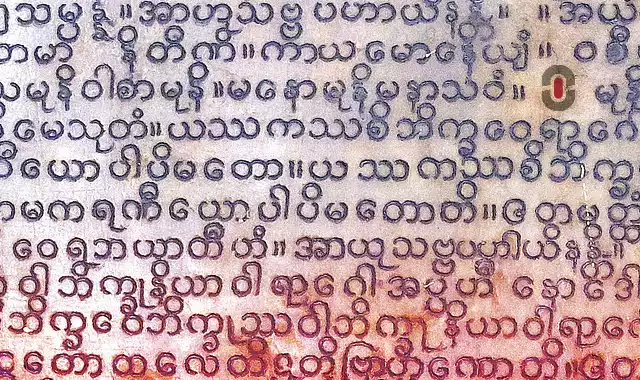Myanmar has had a tumultuous past. From colonialism to independence, to a coup and the closing of borders and now the reopening of international diplomatic ties. This history has certainly had an impact on the Burmese people and on foreign companies seeking to enter the market.
This is nowhere better illustrated than accessibility to the internet and mobile devices. In fact, there was a time when a SIM card for a phone cost $3,000, reserving its use for those who could afford it. However, times have changed and the $7 SIM card has now emerged. There’s also been a proliferation of smartphones, internet connectivity, websites, and apps for local Burmese people to access.
But one major challenge remains and that lies in whether Burmese fonts/Myanmar fonts are used across smart devices and computers or whether it’s Unicode. In this article, we explore the Zawgyi vs Unicode dilemma by looking at what each font and standard means, identifying the challenges, and then focusing on potential solutions.
Let’s dive in.
What is Zawgyi?
In the context of Burmese fonts/Myanmar fonts, Zawgyi is a font that represents the Burmese standard for encoding text on a website or application, whether for desktop computers or smartphones. Zawgyi is only used for Burmese characters in the Burmese language.
In addition, it is a font that does not comply with the international Unicode standard (for more on this, keep reading below). And while it is currently the most widely used font in Myanmar, it does not support ethnic Myanmar languages. In addition, Zawgyi is restricted to specific phones and is specific to the country of Myanmar.
What is Unicode?
We now turn to the international Unicode Standard. It deals with encoding, representing, and handling text and was developed by global experts in 1991. The standard focuses and defines how text should be saved into data and how it is read and written. The Unicode Standard defines almost every script (both modern and ancient), including Burmese.
Furthermore, it is supported by practically all of the latest platforms, which include major operating systems such as Windows, Mac, and Linux as well as operating systems of mobile phones and numerous electronic devices. Today, almost anyone creating or using an app or a website that shows text on a screen uses Unicode, meaning they can be read and understood by different computers around the world.
However, what is interesting to note is that the Unicode Standard was developed at a time when Myanmar was closed to the world. And that is part of the reason why as both use similar ranges of code-points to store and process characters, there will never be one universal font that can render both of them.
The key differences between Zawgyi and Unicode
When it comes to Burmese fonts/Myanmar fonts, it’s essential to understand the key differences between Zawgyi and Unicode in terms of Myanmar language processing. In short, these differences can be summarized as follows:
- Character sets: While Unicode adheres to an international standard character set, Zawgyi uses a unique, proprietary character set.
- Compatibility: Unfortunately, Zawgyi is often incompatible with Unicode systems, which creates challenges in the exchange of data across different platforms.
- Support and standardization: Zawgyi is generally only used within certain Myanmar communities and across specific software. This is because it comes in a non-standard format. Unicode, on the other hand, is standardized internationally and is broadly supported by modern software and platforms.
- Fonts and text rendering: Both Zawgyi and Unicode use different forms of font and text rendering methods. This means that when a Burmese user switches between systems, they will often encounter display issues.
- Encoding methods: The methodology used by both standards differs. Zawgyi, for example, uses a specific encoding format that is specific to the Myanmar language. Meanwhile, Unicode mainly uses UTF-8 encoding, where Unicode characters are efficiently encoded and supported globally.
Challenges: A tale of two fonts
The dilemma between using Zawgyi and Unicode fonts presents major challenges. This is especially the case where apps and websites developed outside of Myanmar assume that users have devices that use Unicode, when this is not the case.
The major challenge is that local users are generally not able to accurately view user interfaces or content that’s created in Unicode. Whether content is articles, blog posts, social media posts, comments, or anything in between, the fact is that over 90% of devices in Myanmar still use Zawgyi.
The challenge also arises in cases of data validation. For example, it is difficult for users to even enter names, phone numbers, or email addresses at the point of registration where they enter Zawgyi characters but where Unicode is the norm, or vice versa. As such, international content that appears on search engines can be constantly misinterpreted and even excluded from search results on Zawgyi devices.
Possible solutions
Navigating the complexities of Burmese fonts/Myanmar fonts doesn’t come without possible solutions. Below are a few that we explore:

- You can focus on detecting the encoding and converting it to Unicode, although accurate detection is not always possible. However, there are tools that can help make good estimations about encoding using algorithms that study large volumes of text. Once you have detected the encoding, convert the text to Unicode and display it in a Unicode-compliant font.
- For websites, it’s recommended that companies use webfonts to ensure that each block of text is displayed accurately. This way, you circumvent the challenge of device limitations because fonts are loaded along with the text as opposed to being downloaded. However, this comes with an additional challenge when it comes to decoding user-generated text.
- For mobile devices, it’s recommended that you use bundled fonts within apps.
- Let your users switch between the different fonts themselves so that they can resolve text display issues. Your job would be to make the language selector obvious on your webpage or app.
Conclusion
While the issue of understanding and accessing Burmese fonts/Myanmar fonts comes with its own set of challenges, the problem is not considered insurmountable if sufficient research into your target market is carried out. Foreign companies seeking to enter the Burmese market have a solid customer base.
But reaching them in a way that they can understand you and your message should be a top priority. Focusing only on Zawgyi or only on Unicode is not the answer. However, a midway solution is possible. With this in mind, you can now better navigate the Burmese fonts/Myanmar fonts dilemma and ensure a better and more seamless user experience on your website or application.
